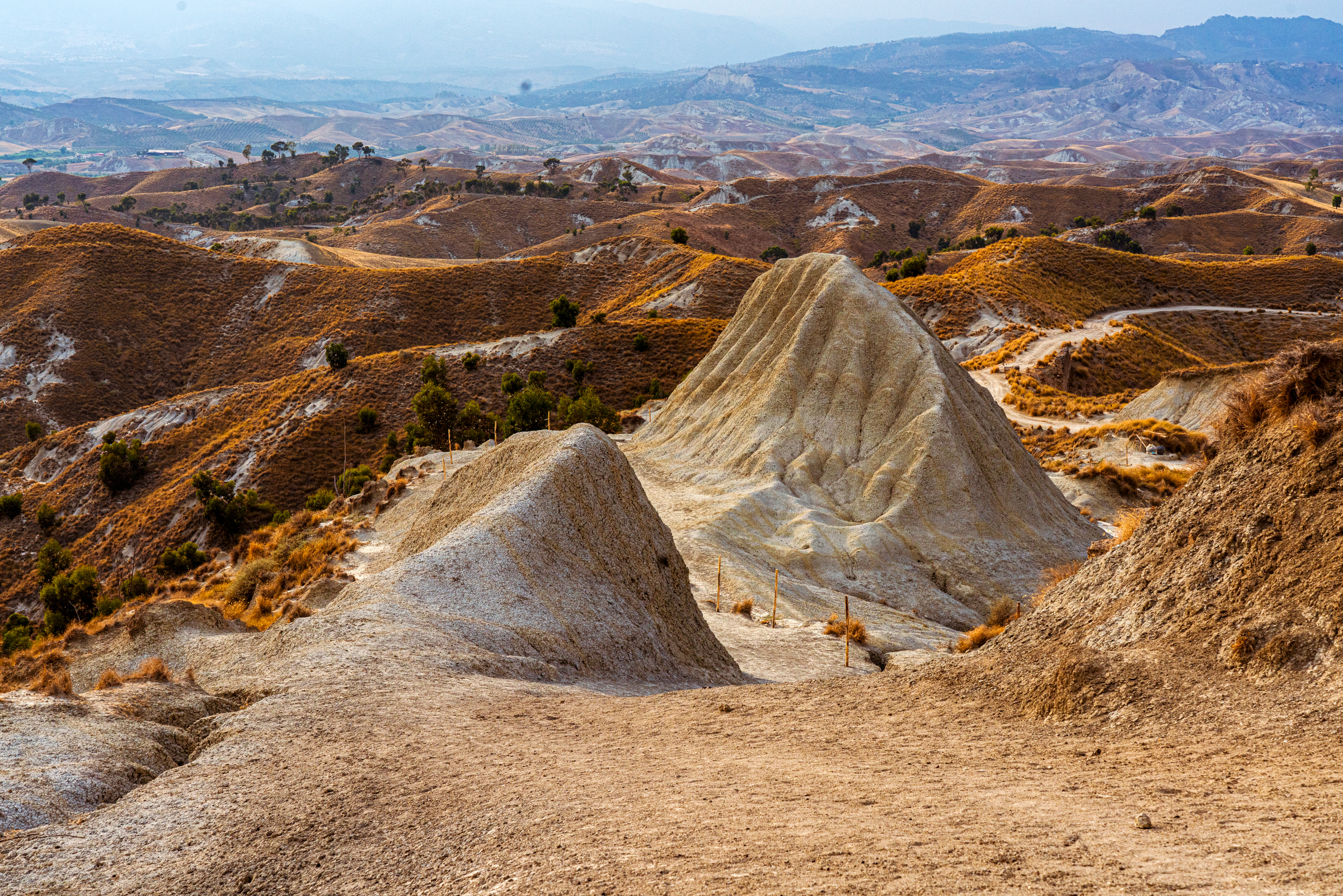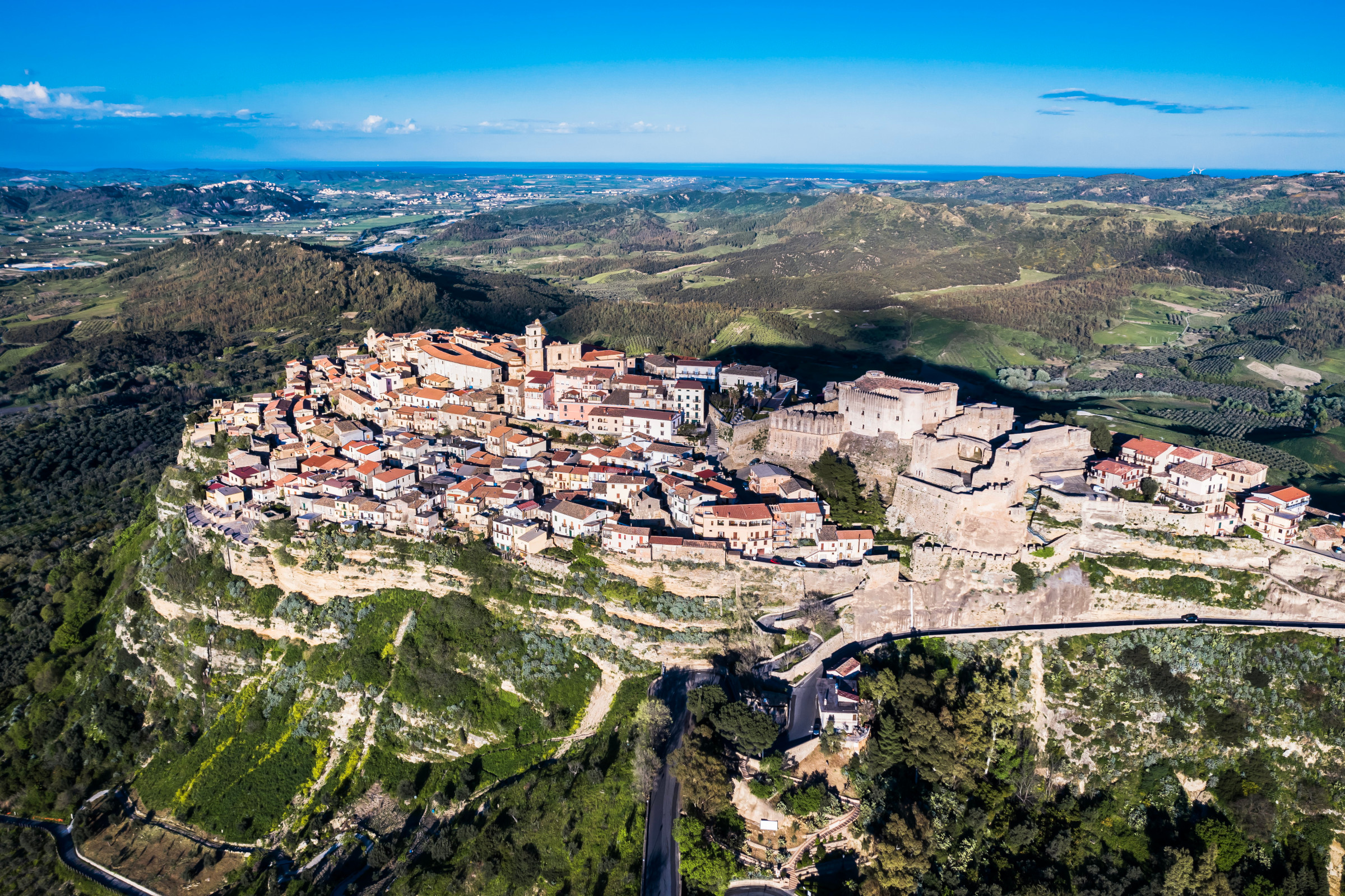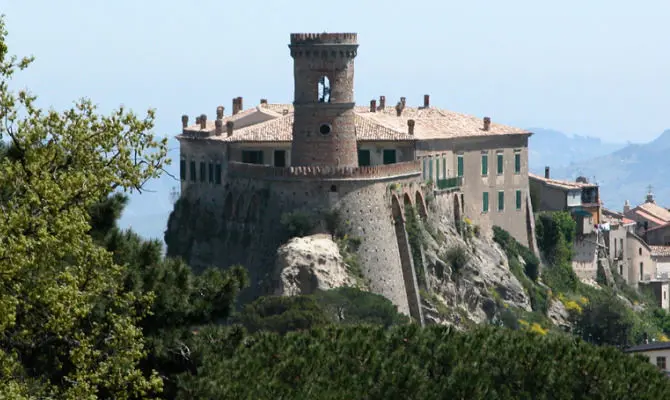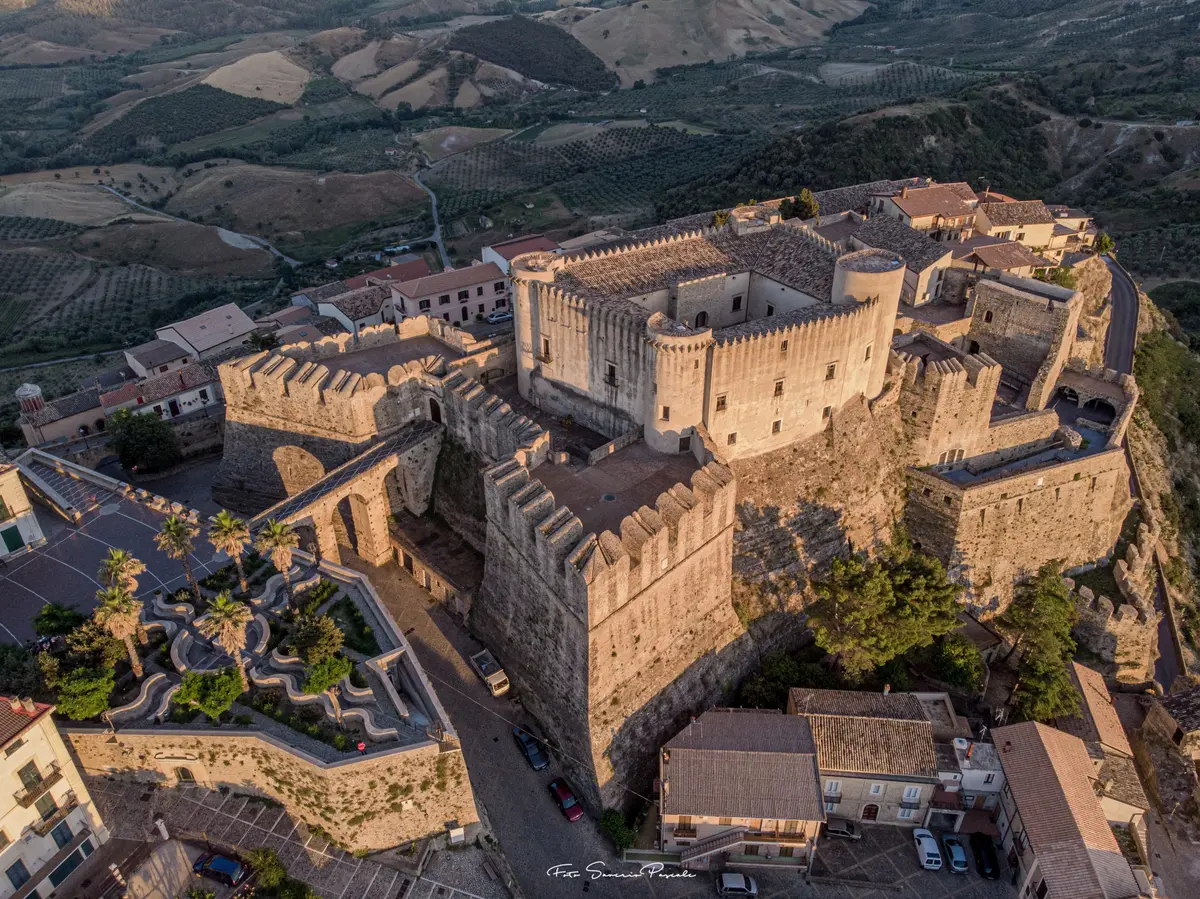Hiking in the Calanchi of the Marchesato
The "yellow dunes" that struck Pasolini

Sport and nature
Raffaele Marino
The first to bring this striking place to national attention was Pier Paolo Pasolini. It was the 1950s and the poet was travelling in his Fiat 1100 along the Statale 106 Ionica when, at Cutro (KR), he came across a lunar landscape: the Calanchi del Marchesato.
An expanse of clay dunes with iridescent tones, which in the reportage The Long Road of Sand he described as "imagined by Kafka", choosing to film many scenes from the film The Gospel According to St. Matthew among those gullies shaped by nature.
Since then, the "yellow dunes" of Cutro and its surroundings have become a destination for nature excursions and sustainable trekking thanks to the work of local young people, who have joined together to safeguard and to promote the precious ecosystem.

Calanchi del Marchesato
Of clayey origin, furrowed by the Neto Valley, the Cutro gullies form a lunar scenario, drawing a series of "knife-edge" slopes.
The light tones of the sand and clay are tinged with the green of the shrubs typical of the Mediterranean dune vegetation.
This particular habitat is rich in protected plant and animal species, such as the European marsh Tortoise and the Cervone, which live in the ponds, in a landscape of extraordinary beauty.
The uniqueness of the excursion to the Marchesato Calanchi lies in the combination of nature and culture through a series of guided itineraries: thematic routes that allow you to grasp both the landscape-environmental and cultural aspects, linked both to Pasolini's production and to the history and traditions of the local communities.
The association of local guides proposes five routes through the gullies of different topics and practicability.
1. Scala-Forche loop route
This is the classic route for experienced hikers, of high difficulty, which over a 4-hour walk (6 km), starting from the town of Cutro, leads straight to the heart of the gullies.
From the splendour of the monumental biancane of La Scala, one arrives at the most evocative part of the valley, the SCI area of the Stagni under Timpone San Francesco, to end on a high note with the panoramic sunset ascent to the highest peak of the complex, Le Forche.

2. Veteram Route
This is an itinerary of medium difficulty, lasting 3 hours (4 km), between the municipalities of Cutro and Roccabernarda.
The route runs along the ancient Via Veteram, the inland road travelled by shepherds and farmers, where old jetties and clay monoliths can still be seen.

3. Urban trekking and Scioddra du Pilusu
The last itinerary is a pleasant stroll through the historic centre of Cutro, from Piazza Giò Leonardo di Bona to the Casale viewpoint, from which to admire the beauty of the Calanchi del Manigliere.
The route, which ends at the Scioddra du Pilusu, a small clay canyon, is dotted with old rural buildings (kilns, clay workshops, small churches, etc.).
The villages of the Crotone Sila
Those wishing to discover the villages and towns of the Crotone Sila can opt for a tour of the most important historic centres, combining a few typical tastings in restaurants, trattorias, agritourisms and wine cellars that offer local delicacies such as Sardella piccante, Pecorino Crotonese DOP and Val di Neto IGT wine.
Among the main centres to visit there is certainly Santa Severina, which is one of The Most Beautiful Villages in Italy. Its historical centre, perched on a tufa spur, dominates the Neto Valley and can be distinguished by its castle-like structure divided into two quarters, Grecìa and Iudea, arranged around the main architectural symbols: the Norman Castle and the Cathedral of Sant'Anastasìa, the oldest Byzantine monument in Calabria, with the Baptistery attached.

Another medieval centre not to be missed, among The Most Beautiful Villages in Italy, is Caccuri, a little further north. Also famous for the Literary Prize of the same name, created thanks to the Accademia dei Caccuriani, the village is identified with the Caccuri Castle and its cylindrical tower. Inside the castle is the precious Palatine Chapel of the Cavalcanti family, of late 17th-century appearance. Also worth visiting are the Badia di Santa Maria del Soccorso and the Church of Santa Maria delle Grazie.

https://calabriastraordinaria.it/en/news/hiking-in-the-calanchi-of-the-marchesato





